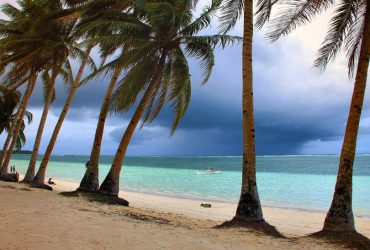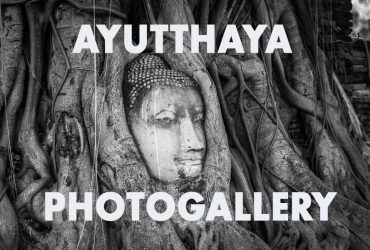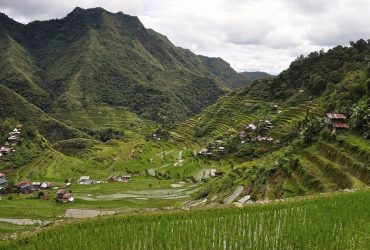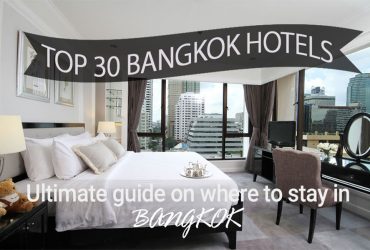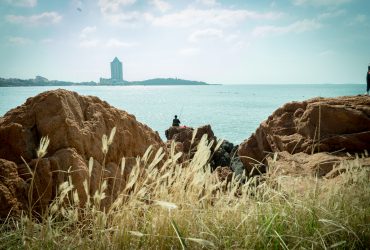Super quick guide to Bohol – April 2019
When I started planning our trip to the Philippines, I could not figure out which places to include in our itinerary. We only had two weeks left, so I wanted to make sure that the visit we made was worth it. Most of the people we asked told us to visit Palawan (of course) and Boracay. For some reason, no one mentioned Bohol, so I just guessed Boracay was more hype among international travelers. Anyhow, Bohol was my choice. 🙂
Bohol is a province-island located in the Visayas region of the Philippines and is the tenth largest island in the country. Unbeknownst to you, apart from Chocolate Hills and Tarsiers, Bohol is also famous for its beautiful beaches and famous diving spots. In 2013, an earthquake of magnitude 7.2 hit Bohol and Cebu and claimed more than 100 lives. You can only imagine how devastating it must have been. Today, Bohol continues to rebuild and, in Ftmy opinion, is recovering quite well in terms of tourism. Getting here As we approached our last days in the Philippines, we were excited to see what Bohol has in store for us. We took an early ferry to Tagbilaran (the capital of Bohol) to get an advantage in our day.
There are several ferries that depart daily from Pier 1 of Cebu City. There are two types of ferries: regular ferry (approximately 4 hours of travel) and fast (approximately 2 hours of travel). To save time, we booked with one of the fast ferry companies, Ocean Jet. I really did not expect much, but surprisingly, the ferry was nice and clean inside. The trip was manageable for the most part, but a dose of Dramamine is recommended to prevent dizziness. If the open sea and ferries are not your thing, you can always book a flight to Tagbilaran airport from Manila or Cebu.
In a nutshell, these are the highlights Bohol has to offer =
- Chocolate hills.
- Pristine beaches and nature.
- Tarsier.
- A few cultural spots scattered around the island.
- Loboc river cruises.
- Very safe part of Philippines with very friendly people.
Rate from Cebu to Tagbilaran: we got ours for P560 (promotion) but the regular fare is P800 each way.
Terminal rate: P25 per person.
For a full list of hotels in Bohol, check here, or keep reading below.
Panglao Island, the place to stay

Panglao Island, the green is (kinda) real, the water is extremely clean and inviting to take a swim.
From Tagbilaran, there are approximately 30 minutes to reach the island of Panglao. We stayed away from the popular tourist spot, Alona Beach and, instead, stayed on the north side of the island at Bohol Beach Club. I’m not deceiving you when I say it’s one of the most beautiful places I’ve ever seen.
The beach was to die for: abundantly tall palm trees, crystal blue waters, and a white sand beach; It is definitely the best place in Bohol to relax and unwind. Two days is not enough! There is so much to do alone at the resort that apart from our tour of the countryside we do not feel the need to leave the property. [Check out my blog to see more breathtaking views of Panglao Island and the Bohol Beach Club. Click on this.] Tour through the field: P2,500 (driver and car only). The resort in which we stayed has tour packages that include a tour guide, lunch, and tickets. We opted to go at our own pace and simply rent a car with a driver who was very friendly and ended up being our tour guide anyway.
More! = Check my Siargao guide here. And my Siargao Hotel-guide here.
Tarsiers, smallest and maybe cutest primates in the world

The first stop on our tour? Tarsiers! Since I read about Tarsiers when I was in elementary school, I’ve been waiting to see them in person. What are tarsiers? Tarsiers are nocturnal creatures that are known to be the smallest primates in the world and can be commonly seen in Southeast Asia. Huge eyes, relatively long tail and long bones of the ankle are just some of the unmistakable characteristics that differentiate them from other primates.
The two most important things to know about them are: they are critically endangered and are prone to hurting themselves when they get stressed. Noise and human contact are the most common stressors these creatures encounter during captivity. Unfortunately, due to their proximity to Chocolate Hills, they took us to the Tarsier Conservation Area in Loboc. After reading an article by a blogger, Aileen, I discovered that this place is a more atypical and non-profit area of vision that is not compatible with the Philippine Tarsier Foundation.
I knew in my instinct that there was something so strange about this place. I even asked one of the volunteers how the tarsiers are so close to the road, within arms reach and more likely to be pushed by tourists. She only told me that the tarsiers considered that at home and in the morning, they would jump from tree to tree, back to their branch near the road. Uhh!, it’s fine. I do not know why I believed it at that moment. Fortunately, I came across this article and now I can inform you that there is a better alternative.
If you want to see tarsiers in their normal habitat, visit The Philippine Tarsier and Wildlife Sanctuary in Corella, a non-profit organization that supports the conservation of Philippine Tarsiers. If you end up visiting them, respect their habitat and do not bombard the adorable creatures with flash photography or any noise. Since they are nocturnal animals, they tend to stay alone and doze. It really bothered me when some people tried to wake them up making a lot of noise. Please, do not be that person!
Visiting the Butterfly Sanctuary

Butterfly Sanctuary in Bohol. Copyright @ kim.bacas
Before heading to Chocolate Hills, we made a trip to Bilar, Bohol, where we visited the Simply Butterflies Conservation Center, the first program to raise and preserve butterfly livelihoods here in Bohol. Based on the principles of butterfly conservation, the sanctuary protects and strengthens the natural environment of butterflies through research, reproduction and the release of plants. Thus, helping to raise the population of butterflies.
The sanctuary has a nature trail, a butterfly garden and a butterfly enclosure where you can walk and see butterflies fluttering around. Our tour only lasted 30 minutes, so James and I asked our guide if we can go back inside to take more pictures of the butterflies. We only saw a few that day, but they told us that there are more than 20 species of butterflies inside the enclosure.
Absolute must = Chocolate hills

Chocolate Hills in Bohol, deliciously awesome!
When I think of Bohol, this is what immediately comes to mind. After all, these uniformed conical hills have become synonymous with Bohol. It is in every souvenir item in every souvenir shop. On paper, it sounds so simple. But when you actually see it in person, you will definitely be amazed.
There are approximately 1,268 hills with sizes varying from 90 to 160 feet. Seeing how they look symmetrical, you might think they are made by man, but definitely not! So, why is it exactly called Chocolate Hills when they look green? It is because the grassy hills turn brown during the dry season. Do not they look like Hershey’s kisses?
We arrived at Chocolate Hills around noon and the place was already full. So crowded that we could not even find parking! The hills are already visible in the parking lot, but to get a better view, we climb 200 steps to the observation deck. It was very difficult to get a shot without someone in the background, especially with everyone who was struggling to get a better position than the other. Some even hoarded the best parts of the observation platform. Not well! After the crowd decreased, we were finally able to enjoy the view and take some pictures.
P50 per person entrance.
More!: Check my off beaten-path Philippines guide here.
Take a cruise on the Loboc River

You can not leave Bohol without having a buffet lunch on the Loboc River. As the boat crossed the river, we filled our bellies with Filipino food, all the time accompanied by a local artist. This was my favorite part of the tour. Even though the food was average, the impressive landscape made up for it and served as a feast for the eyes. Beautiful palms swaying gently along with the wind, rising above us on both sides of the river.
The long, winding stretch of the green river, so peaceful and attractive, was definitely a peaceful walk. It reminded me of the time we kayaked on the Wailua River on Kauai. Before heading to the pier, we made a stop on a floating stage with more than a dozen local artists waiting to perform. Although it was short, I enjoyed it a lot. They played a couple of songs and they also danced. Seeing the locals act warms my heart and reminded me how much I miss the Filipino culture.
Price of the entrance: P100 per person.
Lunch and cruise: P350 per person.
Blood compact monument

This famous tourist place stands as a memorial for the first treaty between the Spaniards and the Filipinos. This event is more commonly known as “Sandugo”. The blood agreement between the chief of Bohol Datu Sikatuna and the Spanish explorer Miguel Lòpez De Legaspi on March 16, 1565, finally established a friendship between the two leaders. We did not really stay here that long because it was very busy (and there is not much to do anyway) but we did check the view behind the monument and it was glorious!
No fee!
Even more fun things to do =
Depending on how much time available these might be a fun way to pass an afternoon:
- Bohol Aquarium Zoo
- Danao Adventure Park
- Can-umantad Falls
- Mahogany Forest
- Churches (St.peter, St.jose)
- Kaligoon Cave Pool
- Balloon riding
- Kayaking
- Motorbiking
And many more! it’s surprising how much fun this relatively small island packs. But generally, I don’t recommend for those who travel with tight schedules.
To stay =


Junior suite @ Hennan hotel, good place for those who have deep pockets.
Panglao island is where I recommend staying. It has the best beaches, parties, and services. For a cheaper alternative, it might be good to stay in Taglibaran.
- Henann Resort Alona Beach. 5* 170$
- Bohol Beach Club. 4* 120$
- Scent of Green Papaya Resort. 3* 51$
- Amorita Resort. 5* 200$
- The Bellevue Resort Bohol. 5* 200$
Cheaper but highly rated hotels in Tagbilaran =
- Ocean Suites Bohol Boutique Hotel. 3* 50$
- Kew Hotel. 3* 40$
For a full list of hotels in Tagbilaran, check here.
